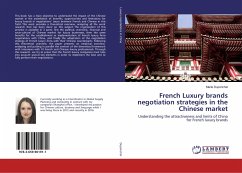This paper addresses the relationship between design and industry as a bridge to minimize the image deficit of Portuguese footwear brands. It reviews the essential themes linked to the competitive advantages of brands as a strategic design resource for organizations, analyzing different types of links between organizations and design culture. In a logic of product and communication integration, visual identity helps us to understand how the process of integrating design into organizations can operate above all at a strategic level. The relationship that the theme of brands establishes with footwear is related to the latent distance between industry and design in Portugal, a factor that is related to the origin of this deficit. Considering the technical and technological resources and know-how in Portugal, the case of the 'Sanjo' brand (1932-1996) is studied. This cultural heritage is a raw material with great potential for developing product and image strategies, with a view to sustainably enhancing Portuguese brands by bringing design and industry closer together.
Hinweis: Dieser Artikel kann nur an eine deutsche Lieferadresse ausgeliefert werden.
Hinweis: Dieser Artikel kann nur an eine deutsche Lieferadresse ausgeliefert werden.








